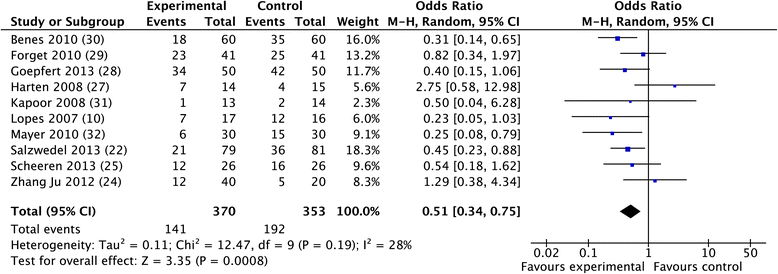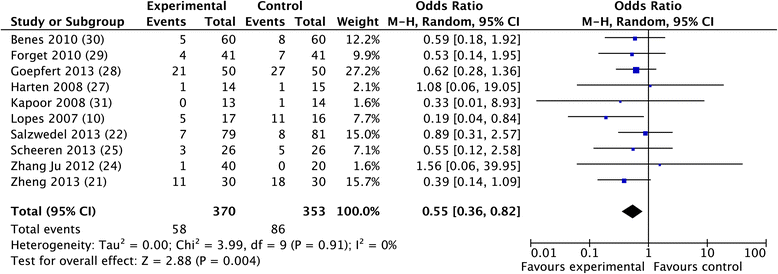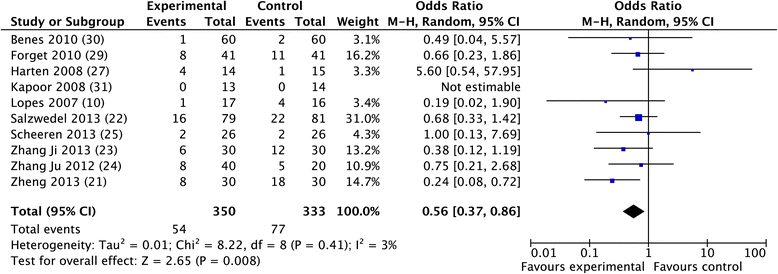The effects of goal-directed fluid therapy based on dynamic parameters on post-surgical outcome: a meta-analysis of randomized controlled trials
- PMID: 25348900
- PMCID: PMC4234857
- DOI: 10.1186/s13054-014-0584-z
The effects of goal-directed fluid therapy based on dynamic parameters on post-surgical outcome: a meta-analysis of randomized controlled trials
Abstract
Introduction: Dynamic predictors of fluid responsiveness, namely systolic pressure variation, pulse pressure variation, stroke volume variation and pleth variability index have been shown to be useful to identify in advance patients who will respond to a fluid load by a significant increase in stroke volume and cardiac output. As a result, they are increasingly used to guide fluid therapy. Several randomized controlled trials have tested the ability of goal-directed fluid therapy (GDFT) based on dynamic parameters (GDFTdyn) to improve post-surgical outcome. These studies have yielded conflicting results. Therefore, we performed this meta-analysis to investigate whether the use of GDFTdyn is associated with a decrease in post-surgical morbidity.
Methods: A systematic literature review, using MEDLINE, EMBASE, and The Cochrane Library databases through September 2013 was conducted. Data synthesis was obtained by using odds ratio (OR) and weighted mean difference (WMD) with 95% confidence interval (CI) by random-effects model.
Results: In total, 14 studies met the inclusion criteria (961 participants). Post-operative morbidity was reduced by GDFTdyn (OR 0.51; CI 0.34 to 0.75; P <0.001). This effect was related to a significant reduction in infectious (OR 0.45; CI 0.27 to 0.74; P = 0.002), cardiovascular (OR 0.55; CI 0.36 to 0.82; P = 0.004) and abdominal (OR 0.56; CI 0.37 to 0.86; P = 0.008) complications. It was associated with a significant decrease in ICU length of stay (WMD -0.75 days; CI -1.37 to -0.12; P = 0.02).
Conclusions: In surgical patients, we found that GDFTdyn decreased post-surgical morbidity and ICU length of stay. Because of the heterogeneity of studies analyzed, large prospective clinical trials would be useful to confirm our findings.
Figures






References
-
- Michard F, Boussat S, Chemla D, Anguel N, Mercat A, Lecarpentier Y, Richard C, Pinsky MR, Teboul JL. Relation between respiratory changes in arterial pulse pressure and fluid responsiveness in septic patients with acute circulatory failure. Am J Respir Crit Care Med. 2000;162:134–138. doi: 10.1164/ajrccm.162.1.9903035. - DOI - PubMed
-
- Perel A. Assessing fluid responsiveness by the systolic pressure variation in mechanically ventilated patients. Systolic pressure variation as a guide to fluid therapy in patients with sepsis-induced hypotension. Anesthesiology. 1998;89:1309–1310. doi: 10.1097/00000542-199812000-00005. - DOI - PubMed
Publication types
MeSH terms
LinkOut - more resources
Full Text Sources
Other Literature Sources
Medical
Research Materials
Miscellaneous

